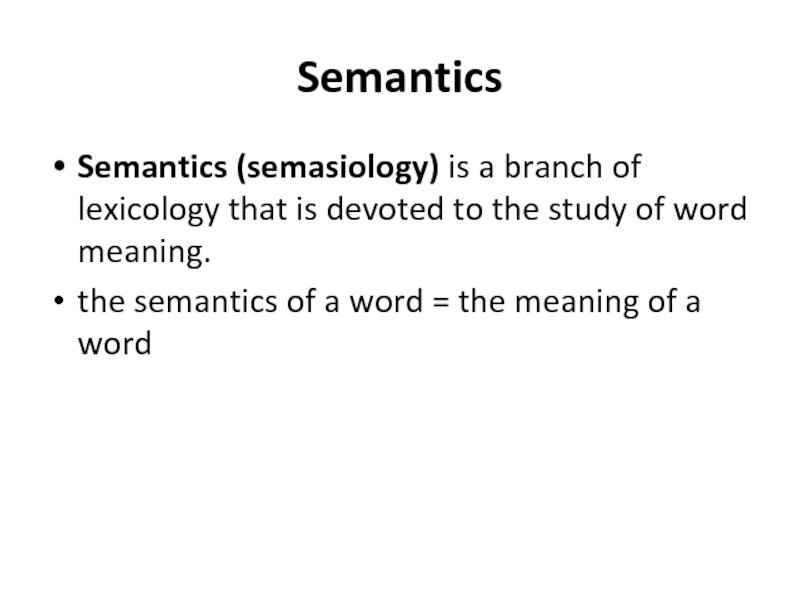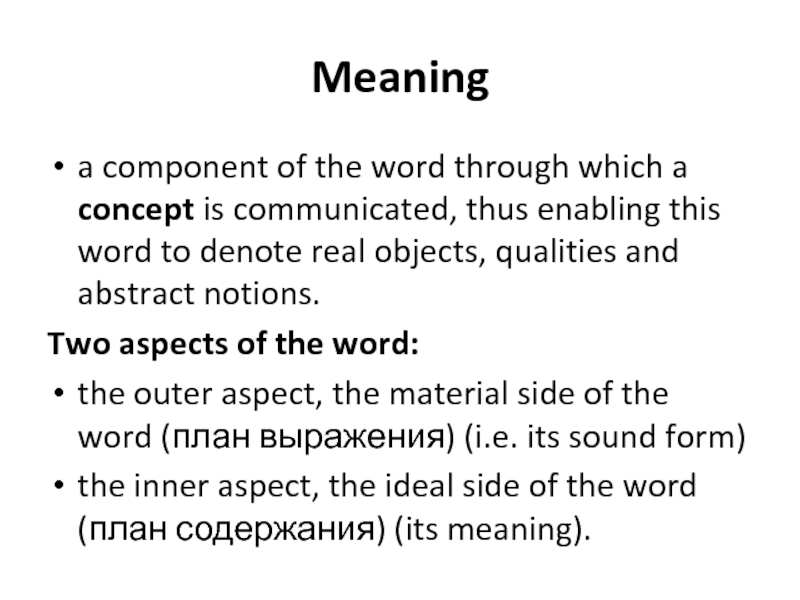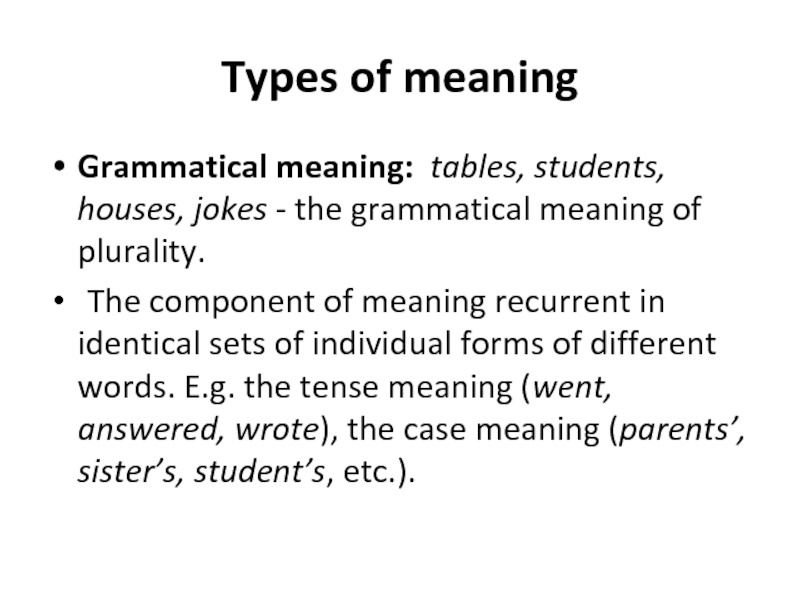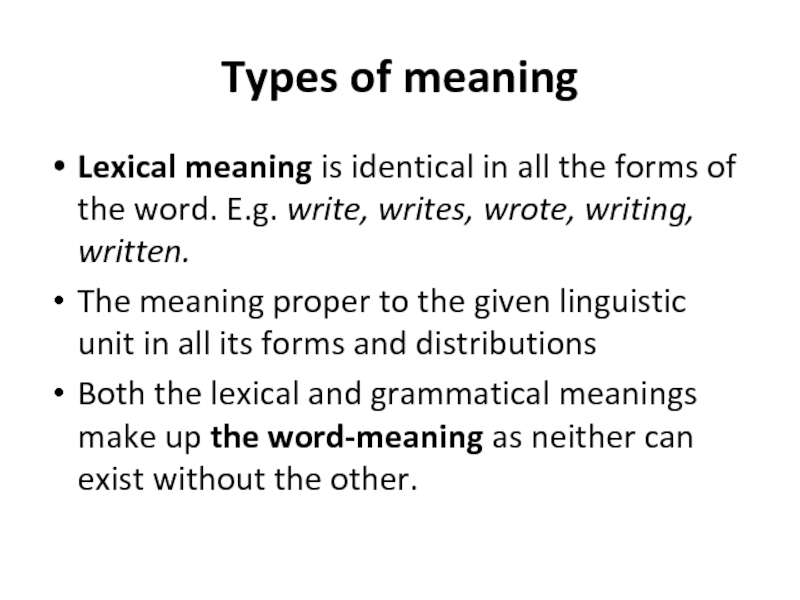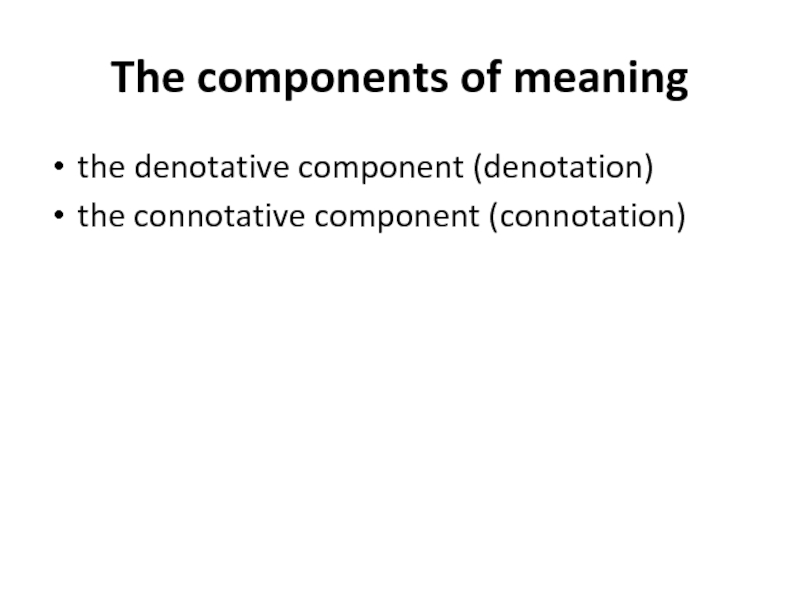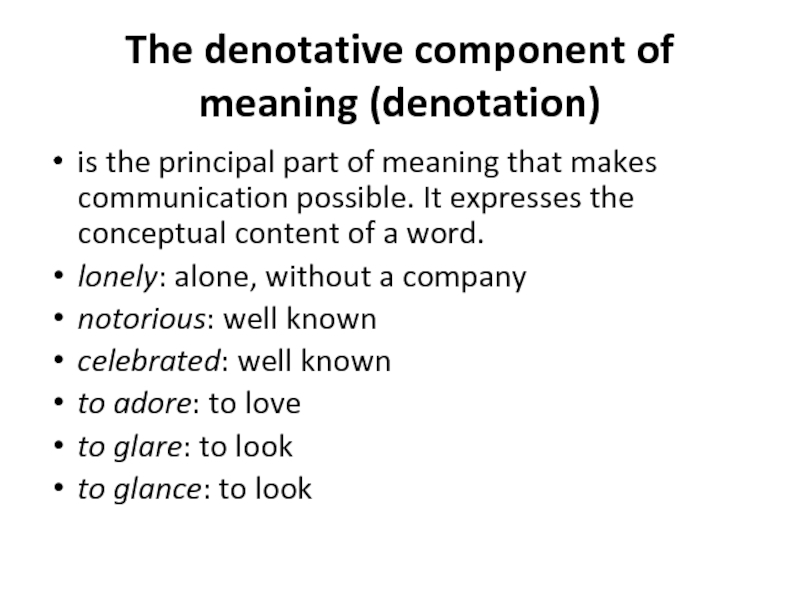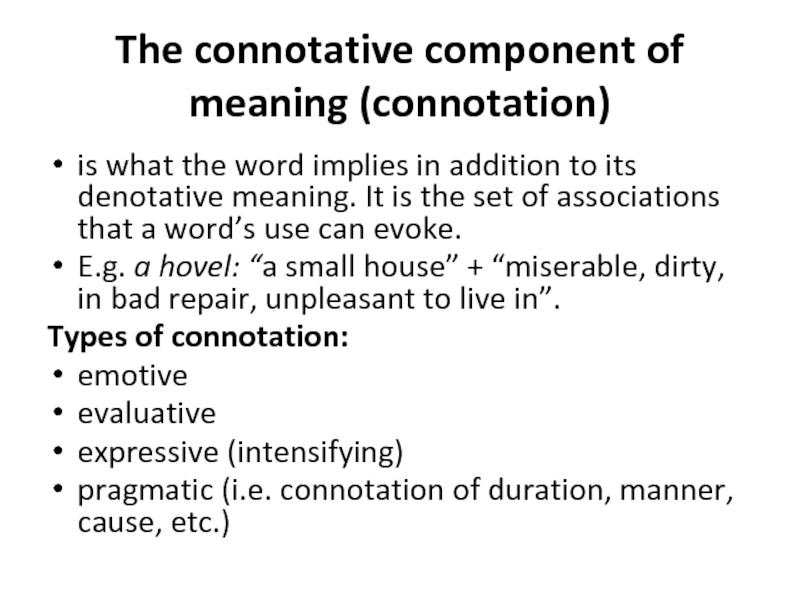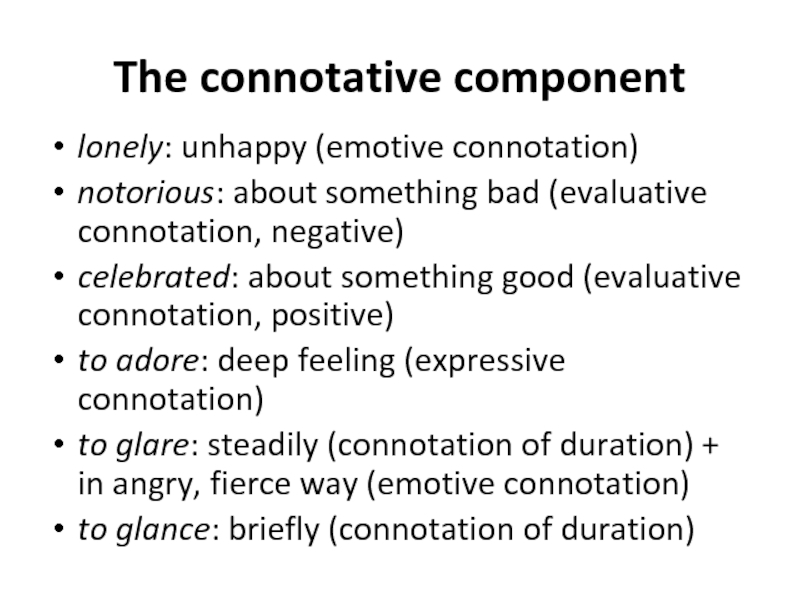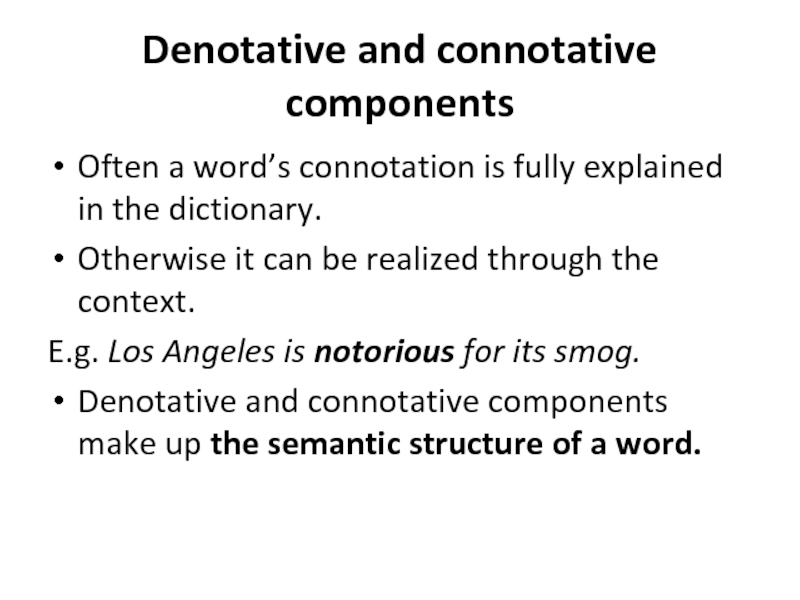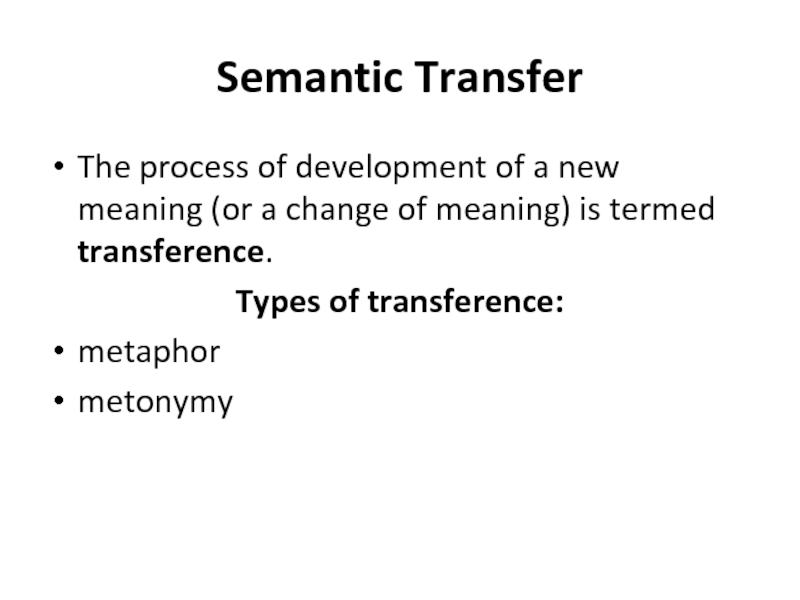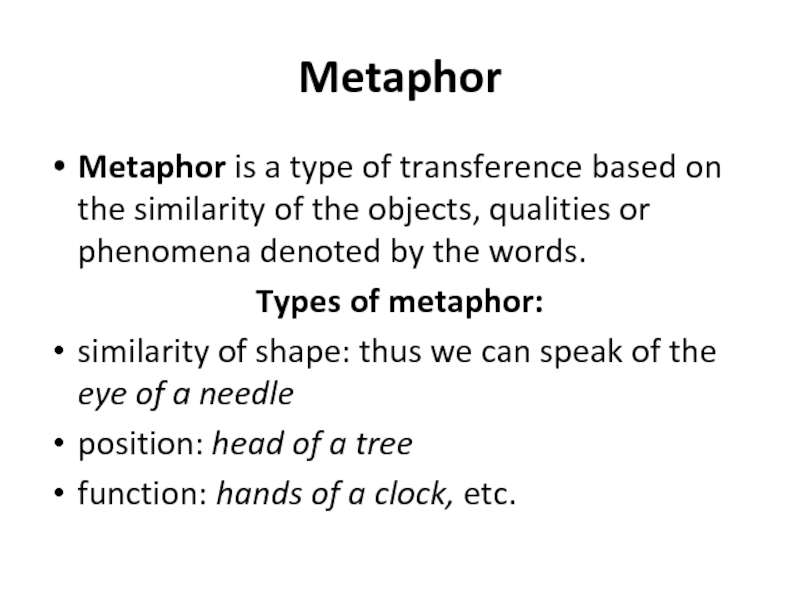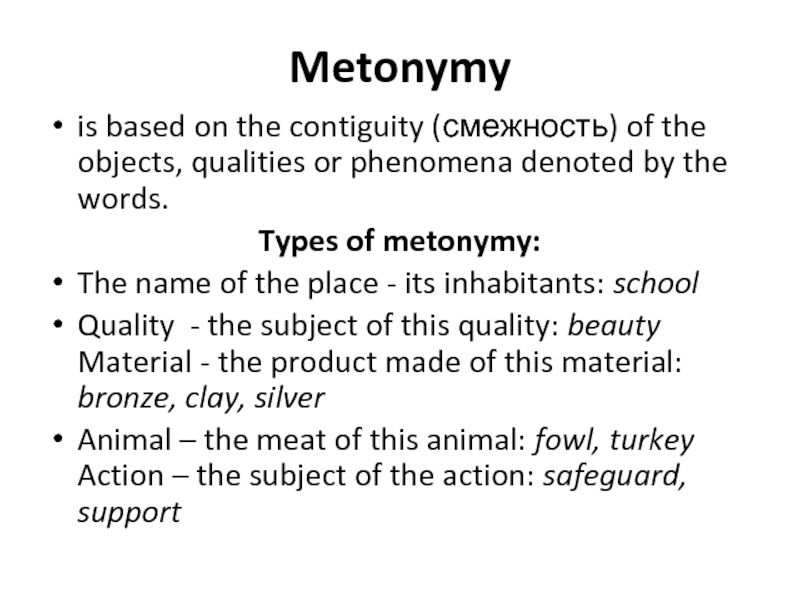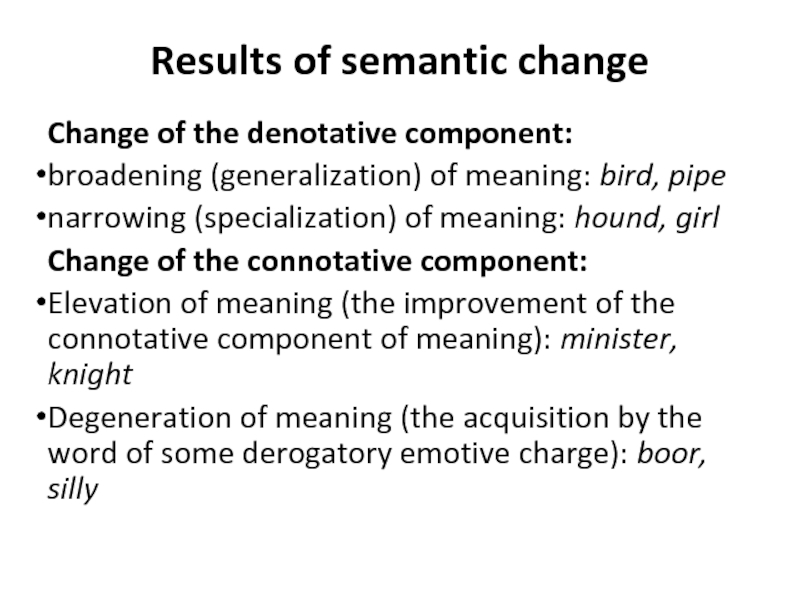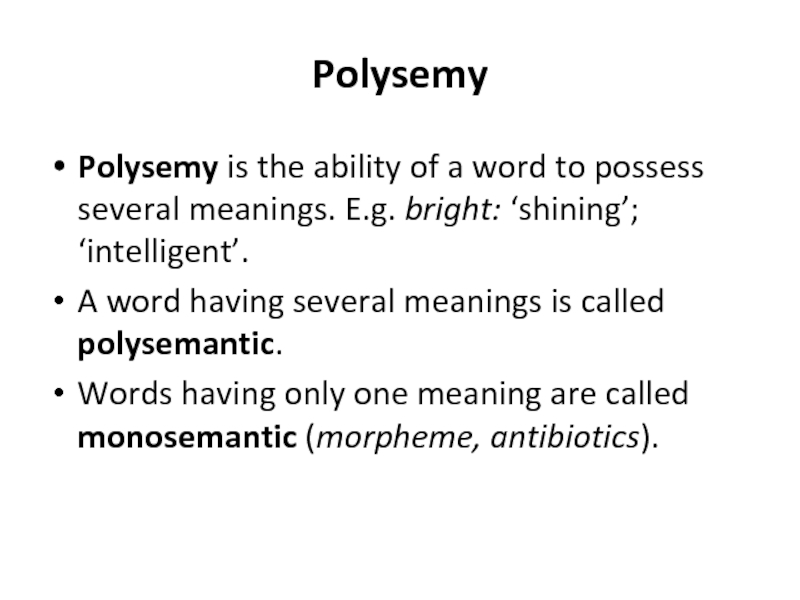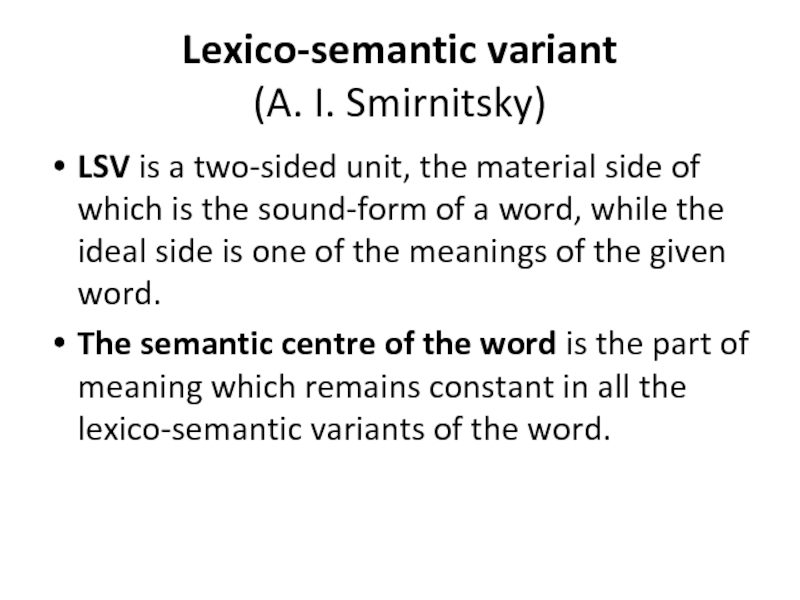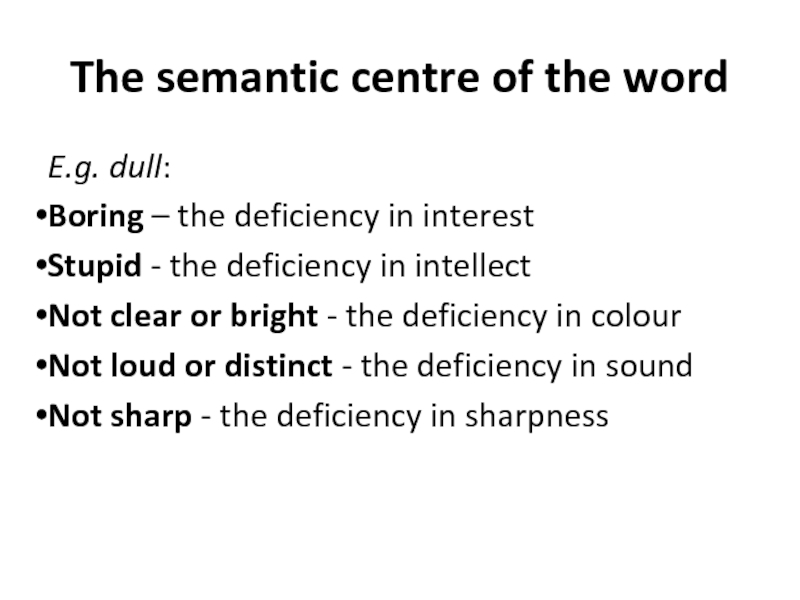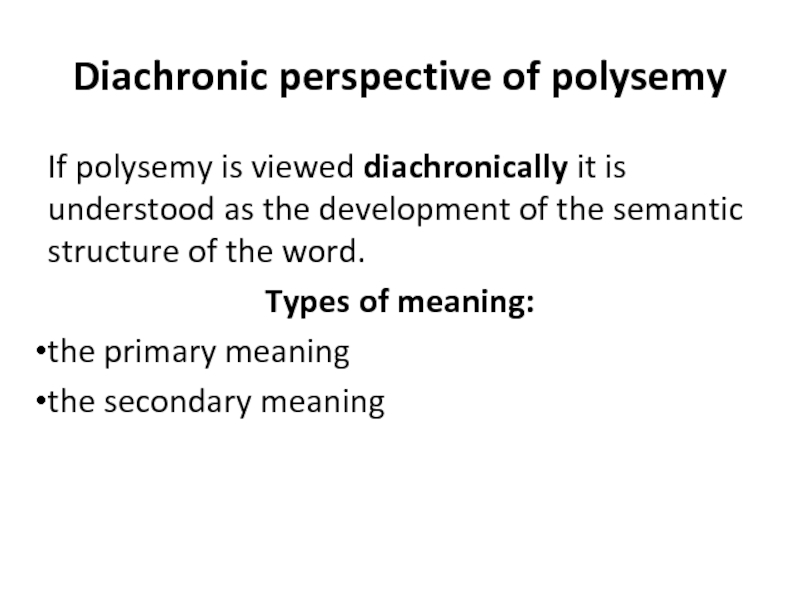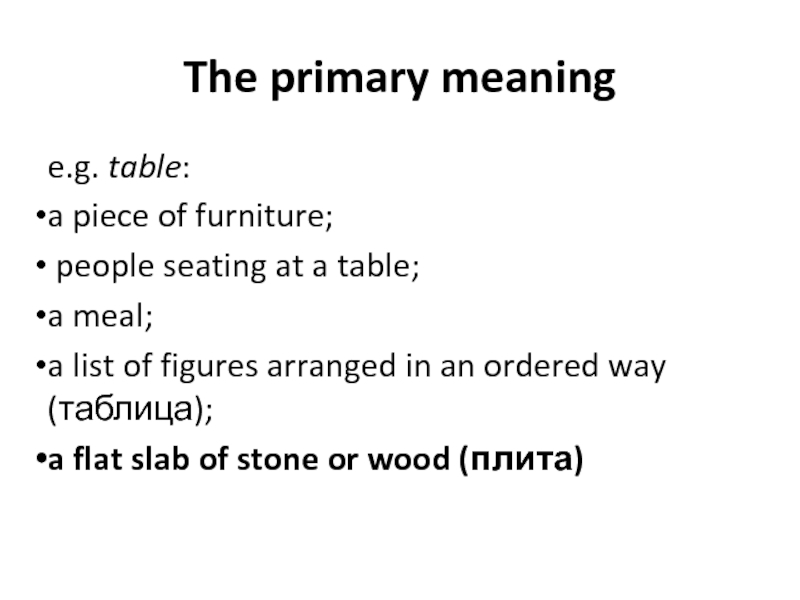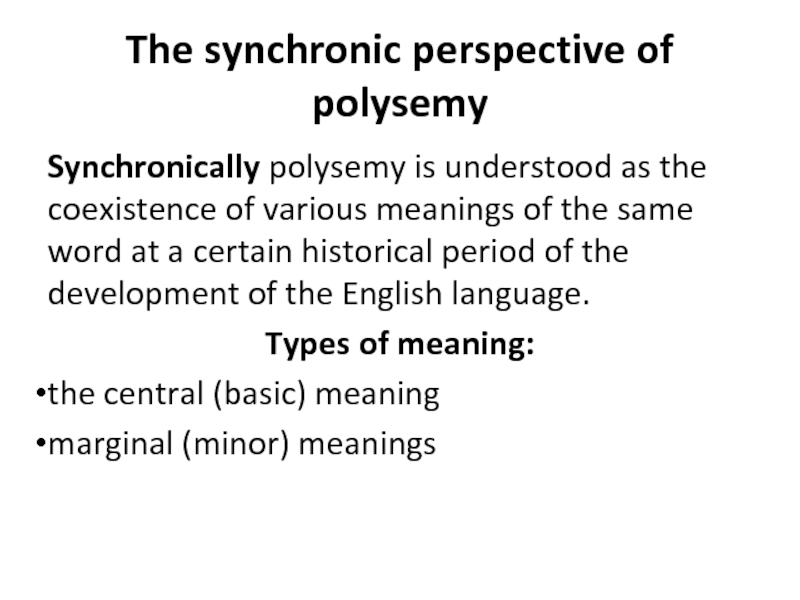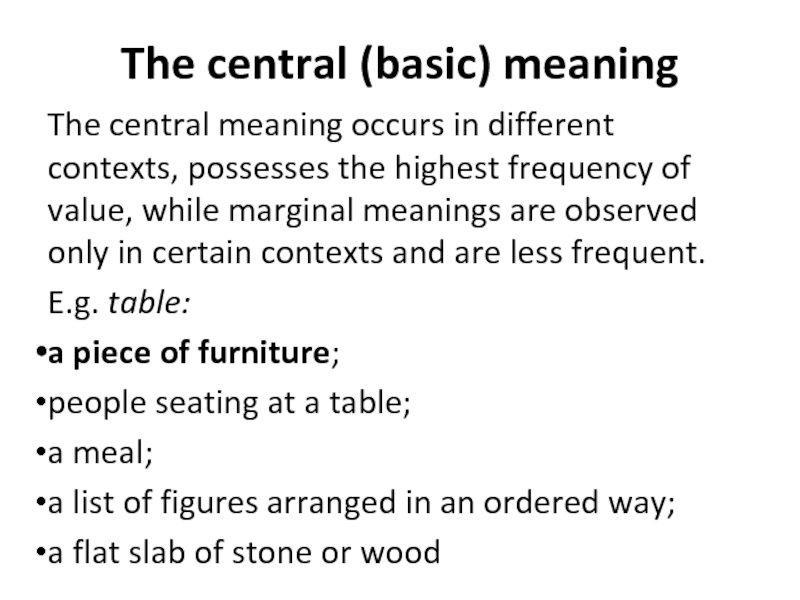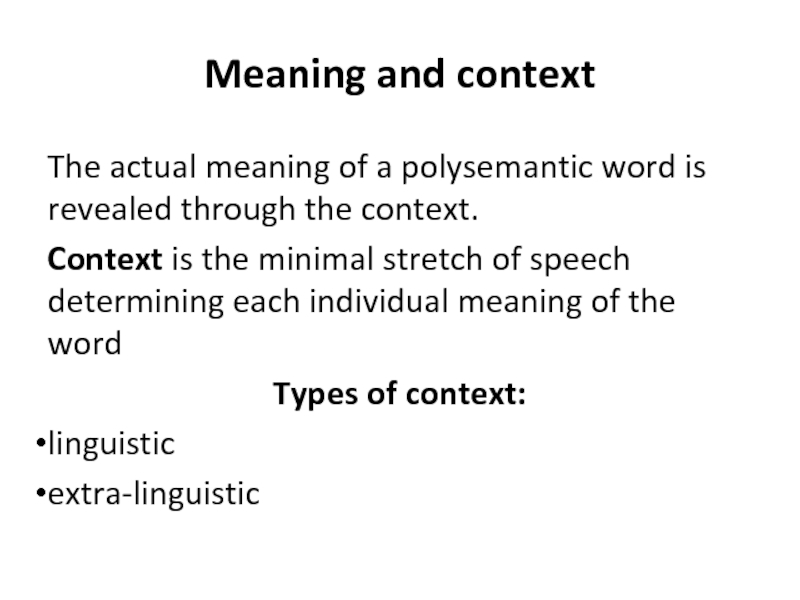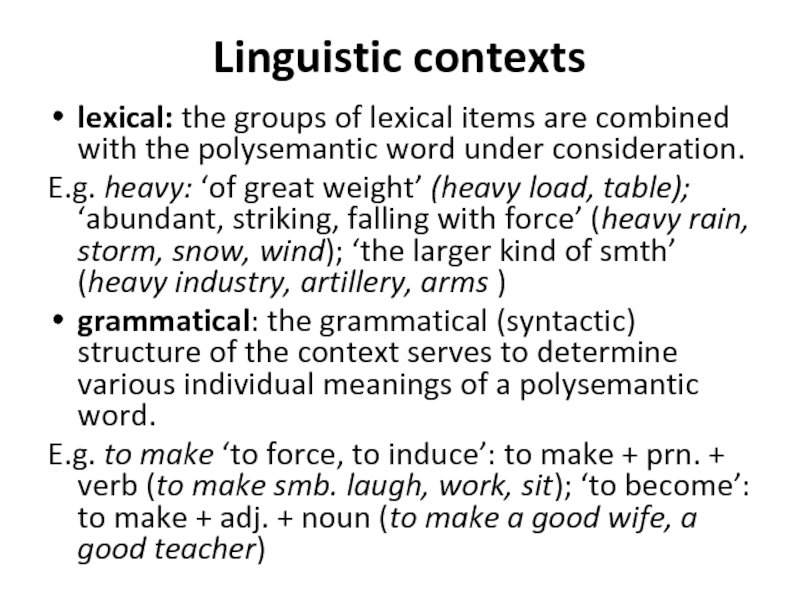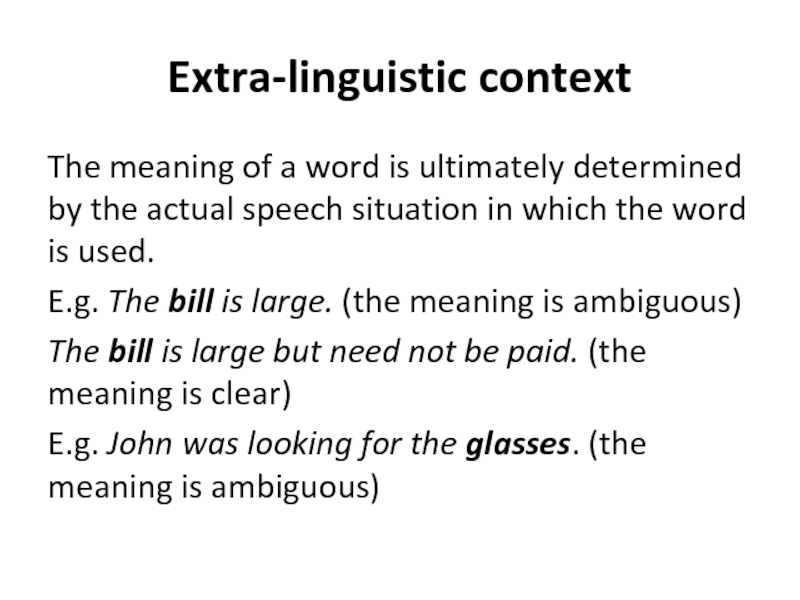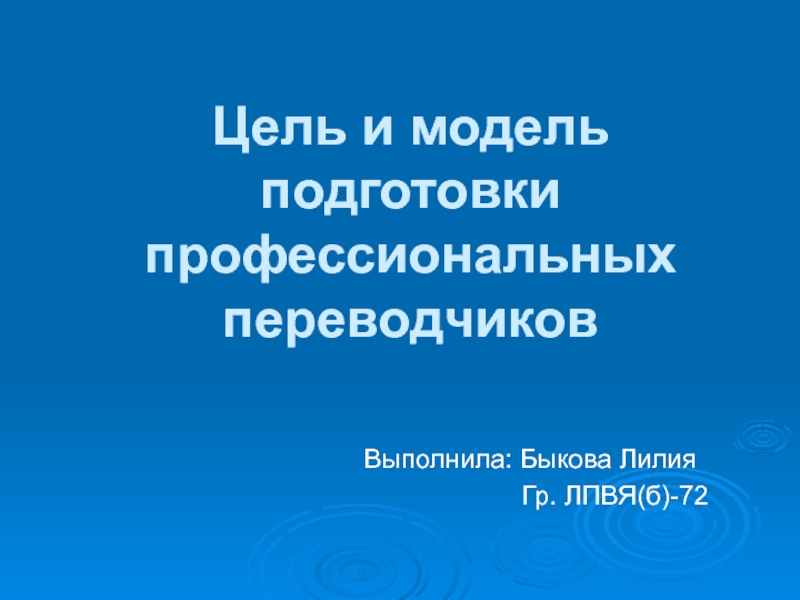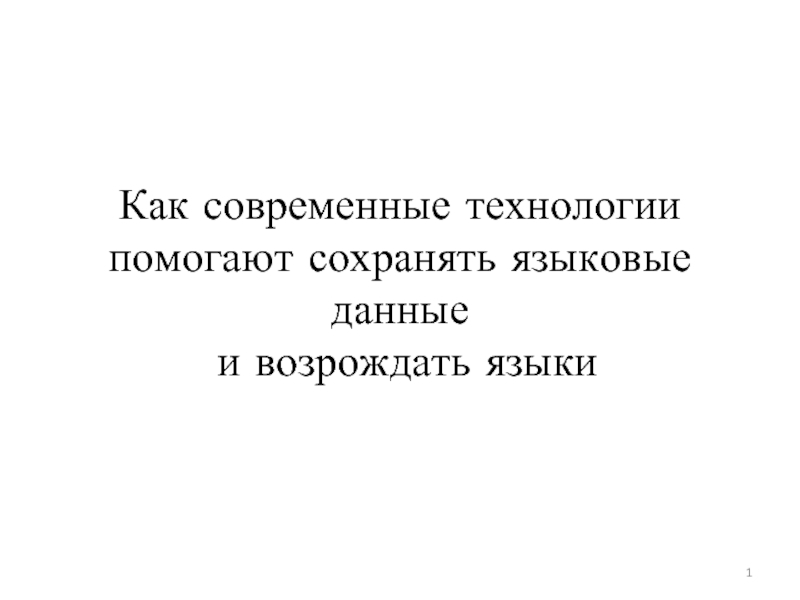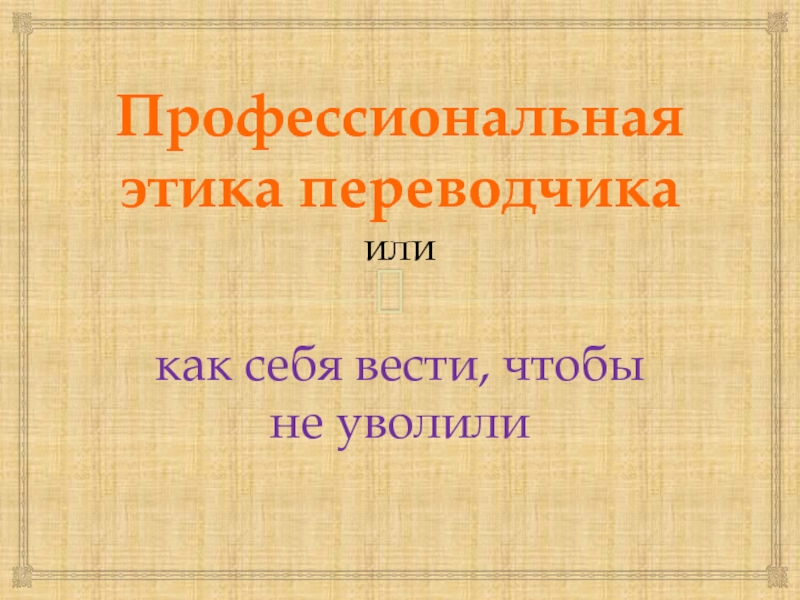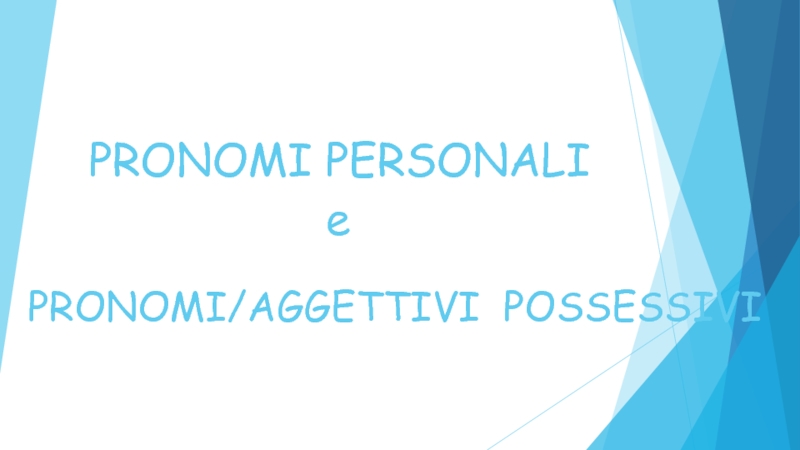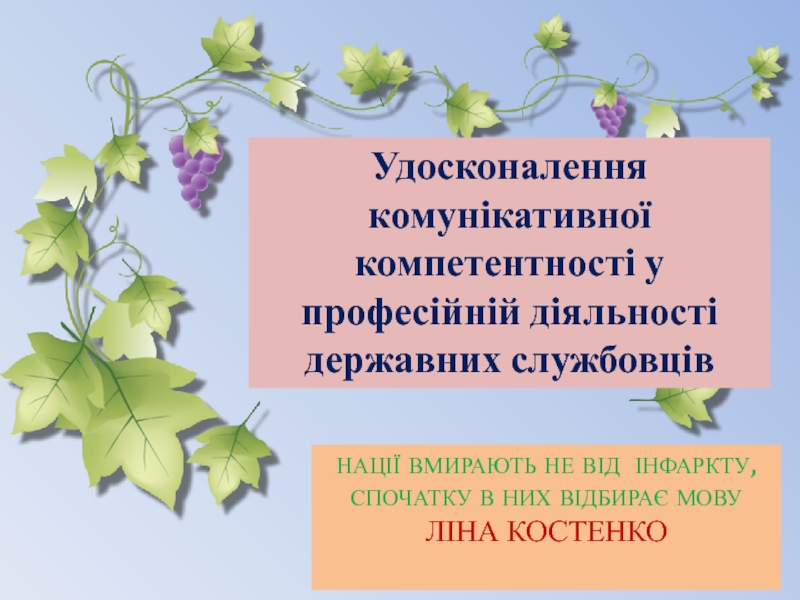the study of word meaning.
the semantics of a word = the meaning of a word
- Главная
- Разное
- Дизайн
- Бизнес и предпринимательство
- Аналитика
- Образование
- Развлечения
- Красота и здоровье
- Финансы
- Государство
- Путешествия
- Спорт
- Недвижимость
- Армия
- Графика
- Культурология
- Еда и кулинария
- Лингвистика
- Английский язык
- Астрономия
- Алгебра
- Биология
- География
- Детские презентации
- Информатика
- История
- Литература
- Маркетинг
- Математика
- Медицина
- Менеджмент
- Музыка
- МХК
- Немецкий язык
- ОБЖ
- Обществознание
- Окружающий мир
- Педагогика
- Русский язык
- Технология
- Физика
- Философия
- Химия
- Шаблоны, картинки для презентаций
- Экология
- Экономика
- Юриспруденция
Semantics (semasiology). Meaning презентация
Содержание
- 1. Semantics (semasiology). Meaning
- 2. Meaning a component of the word through
- 3. Types of meaning Grammatical meaning: tables, students,
- 4. Types of meaning Lexical meaning is identical
- 5. The components of meaning the denotative component (denotation) the connotative component (connotation)
- 6. The denotative component of meaning (denotation) is
- 7. The connotative component of meaning (connotation) is
- 8. The connotative component lonely: unhappy (emotive connotation)
- 9. Denotative and connotative components Often a word’s
- 10. Semantic Transfer The process of development of
- 11. Metaphor Metaphor is a type of transference
- 12. Metonymy is based on the contiguity (смежность)
- 13. Results of semantic change Change
- 14. Polysemy Polysemy is the ability
- 15. Lexico-semantic variant (A. I. Smirnitsky) LSV is a
- 16. The semantic centre of the word E.g.
- 17. Diachronic perspective of polysemy If polysemy is
- 18. The primary meaning e.g. table: a
- 19. The synchronic perspective of polysemy Synchronically polysemy
- 20. The central (basic) meaning The
- 21. Meaning and context The actual
- 22. Linguistic contexts lexical: the groups of
- 23. Extra-linguistic context The meaning of a word
Слайд 2Meaning
a component of the word through which a concept is communicated,
thus enabling this word to denote real objects, qualities and abstract notions.
Two aspects of the word:
the outer aspect, the material side of the word (план выражения) (i.e. its sound form)
the inner aspect, the ideal side of the word (план содержания) (its meaning).
Two aspects of the word:
the outer aspect, the material side of the word (план выражения) (i.e. its sound form)
the inner aspect, the ideal side of the word (план содержания) (its meaning).
Слайд 3Types of meaning
Grammatical meaning: tables, students, houses, jokes - the grammatical
meaning of plurality.
The component of meaning recurrent in identical sets of individual forms of different words. E.g. the tense meaning (went, answered, wrote), the case meaning (parents’, sister’s, student’s, etc.).
The component of meaning recurrent in identical sets of individual forms of different words. E.g. the tense meaning (went, answered, wrote), the case meaning (parents’, sister’s, student’s, etc.).
Слайд 4Types of meaning
Lexical meaning is identical in all the forms of
the word. E.g. write, writes, wrote, writing, written.
The meaning proper to the given linguistic unit in all its forms and distributions
Both the lexical and grammatical meanings make up the word-meaning as neither can exist without the other.
The meaning proper to the given linguistic unit in all its forms and distributions
Both the lexical and grammatical meanings make up the word-meaning as neither can exist without the other.
Слайд 5The components of meaning
the denotative component (denotation)
the connotative component (connotation)
Слайд 6The denotative component of meaning (denotation)
is the principal part of meaning
that makes communication possible. It expresses the conceptual content of a word.
lonely: alone, without a company
notorious: well known
celebrated: well known
to adore: to love
to glare: to look
to glance: to look
lonely: alone, without a company
notorious: well known
celebrated: well known
to adore: to love
to glare: to look
to glance: to look
Слайд 7The connotative component of meaning (connotation)
is what the word implies in
addition to its denotative meaning. It is the set of associations that a word’s use can evoke.
E.g. a hovel: “a small house” + “miserable, dirty, in bad repair, unpleasant to live in”.
Types of connotation:
emotive
evaluative
expressive (intensifying)
pragmatic (i.e. connotation of duration, manner, cause, etc.)
E.g. a hovel: “a small house” + “miserable, dirty, in bad repair, unpleasant to live in”.
Types of connotation:
emotive
evaluative
expressive (intensifying)
pragmatic (i.e. connotation of duration, manner, cause, etc.)
Слайд 8The connotative component
lonely: unhappy (emotive connotation)
notorious: about something bad (evaluative connotation,
negative)
celebrated: about something good (evaluative connotation, positive)
to adore: deep feeling (expressive connotation)
to glare: steadily (connotation of duration) + in angry, fierce way (emotive connotation)
to glance: briefly (connotation of duration)
celebrated: about something good (evaluative connotation, positive)
to adore: deep feeling (expressive connotation)
to glare: steadily (connotation of duration) + in angry, fierce way (emotive connotation)
to glance: briefly (connotation of duration)
Слайд 9Denotative and connotative components
Often a word’s connotation is fully explained in
the dictionary.
Otherwise it can be realized through the context.
E.g. Los Angeles is notorious for its smog.
Denotative and connotative components make up the semantic structure of a word.
Otherwise it can be realized through the context.
E.g. Los Angeles is notorious for its smog.
Denotative and connotative components make up the semantic structure of a word.
Слайд 10Semantic Transfer
The process of development of a new meaning (or a
change of meaning) is termed transference.
Types of transference:
metaphor
metonymy
Types of transference:
metaphor
metonymy
Слайд 11Metaphor
Metaphor is a type of transference based on the similarity of
the objects, qualities or phenomena denoted by the words.
Types of metaphor:
similarity of shape: thus we can speak of the eye of a needle
position: head of a tree
function: hands of a clock, etc.
Types of metaphor:
similarity of shape: thus we can speak of the eye of a needle
position: head of a tree
function: hands of a clock, etc.
Слайд 12Metonymy
is based on the contiguity (смежность) of the objects, qualities or
phenomena denoted by the words.
Types of metonymy:
The name of the place - its inhabitants: school
Quality - the subject of this quality: beauty Material - the product made of this material: bronze, clay, silver
Animal – the meat of this animal: fowl, turkey Action – the subject of the action: safeguard, support
Types of metonymy:
The name of the place - its inhabitants: school
Quality - the subject of this quality: beauty Material - the product made of this material: bronze, clay, silver
Animal – the meat of this animal: fowl, turkey Action – the subject of the action: safeguard, support
Слайд 13
Results of semantic change
Change of the denotative component:
broadening (generalization) of meaning:
bird, pipe
narrowing (specialization) of meaning: hound, girl
Change of the connotative component:
Elevation of meaning (the improvement of the connotative component of meaning): minister, knight
Degeneration of meaning (the acquisition by the word of some derogatory emotive charge): boor, silly
narrowing (specialization) of meaning: hound, girl
Change of the connotative component:
Elevation of meaning (the improvement of the connotative component of meaning): minister, knight
Degeneration of meaning (the acquisition by the word of some derogatory emotive charge): boor, silly
Слайд 14
Polysemy
Polysemy is the ability of a word to possess several meanings.
E.g. bright: ‘shining’; ‘intelligent’.
A word having several meanings is called polysemantic.
Words having only one meaning are called monosemantic (morpheme, antibiotics).
A word having several meanings is called polysemantic.
Words having only one meaning are called monosemantic (morpheme, antibiotics).
Слайд 15Lexico-semantic variant (A. I. Smirnitsky)
LSV is a two-sided unit, the material side
of which is the sound-form of a word, while the ideal side is one of the meanings of the given word.
The semantic centre of the word is the part of meaning which remains constant in all the lexico-semantic variants of the word.
The semantic centre of the word is the part of meaning which remains constant in all the lexico-semantic variants of the word.
Слайд 16The semantic centre of the word
E.g. dull:
Boring – the deficiency in
interest
Stupid - the deficiency in intellect
Not clear or bright - the deficiency in colour
Not loud or distinct - the deficiency in sound
Not sharp - the deficiency in sharpness
Stupid - the deficiency in intellect
Not clear or bright - the deficiency in colour
Not loud or distinct - the deficiency in sound
Not sharp - the deficiency in sharpness
Слайд 17Diachronic perspective of polysemy
If polysemy is viewed diachronically it is understood
as the development of the semantic structure of the word.
Types of meaning:
the primary meaning
the secondary meaning
Types of meaning:
the primary meaning
the secondary meaning
Слайд 18The primary meaning
e.g. table:
a piece of furniture;
people seating at
a table;
a meal;
a list of figures arranged in an ordered way (таблица);
a flat slab of stone or wood (плита)
a meal;
a list of figures arranged in an ordered way (таблица);
a flat slab of stone or wood (плита)
Слайд 19The synchronic perspective of polysemy
Synchronically polysemy is understood as the coexistence
of various meanings of the same word at a certain historical period of the development of the English language.
Types of meaning:
the central (basic) meaning
marginal (minor) meanings
Types of meaning:
the central (basic) meaning
marginal (minor) meanings
Слайд 20
The central (basic) meaning
The central meaning occurs in different contexts, possesses
the highest frequency of value, while marginal meanings are observed only in certain contexts and are less frequent.
E.g. table:
a piece of furniture;
people seating at a table;
a meal;
a list of figures arranged in an ordered way;
a flat slab of stone or wood
E.g. table:
a piece of furniture;
people seating at a table;
a meal;
a list of figures arranged in an ordered way;
a flat slab of stone or wood
Слайд 21
Meaning and context
The actual meaning of a polysemantic word is revealed
through the context.
Context is the minimal stretch of speech determining each individual meaning of the word
Types of context:
linguistic
extra-linguistic
Context is the minimal stretch of speech determining each individual meaning of the word
Types of context:
linguistic
extra-linguistic
Слайд 22Linguistic contexts
lexical: the groups of lexical items are combined with
the polysemantic word under consideration.
E.g. heavy: ‘of great weight’ (heavy load, table); ‘abundant, striking, falling with force’ (heavy rain, storm, snow, wind); ‘the larger kind of smth’ (heavy industry, artillery, arms )
grammatical: the grammatical (syntactic) structure of the context serves to determine various individual meanings of a polysemantic word.
E.g. to make ‘to force, to induce’: to make + prn. + verb (to make smb. laugh, work, sit); ‘to become’: to make + adj. + noun (to make a good wife, a good teacher)
E.g. heavy: ‘of great weight’ (heavy load, table); ‘abundant, striking, falling with force’ (heavy rain, storm, snow, wind); ‘the larger kind of smth’ (heavy industry, artillery, arms )
grammatical: the grammatical (syntactic) structure of the context serves to determine various individual meanings of a polysemantic word.
E.g. to make ‘to force, to induce’: to make + prn. + verb (to make smb. laugh, work, sit); ‘to become’: to make + adj. + noun (to make a good wife, a good teacher)
Слайд 23Extra-linguistic context
The meaning of a word is ultimately determined by the
actual speech situation in which the word is used.
E.g. The bill is large. (the meaning is ambiguous)
The bill is large but need not be paid. (the meaning is clear)
E.g. John was looking for the glasses. (the meaning is ambiguous)
E.g. The bill is large. (the meaning is ambiguous)
The bill is large but need not be paid. (the meaning is clear)
E.g. John was looking for the glasses. (the meaning is ambiguous)
